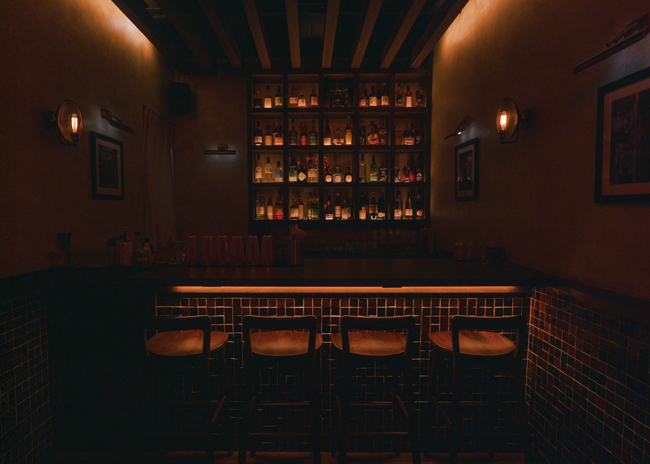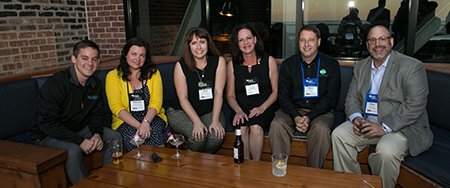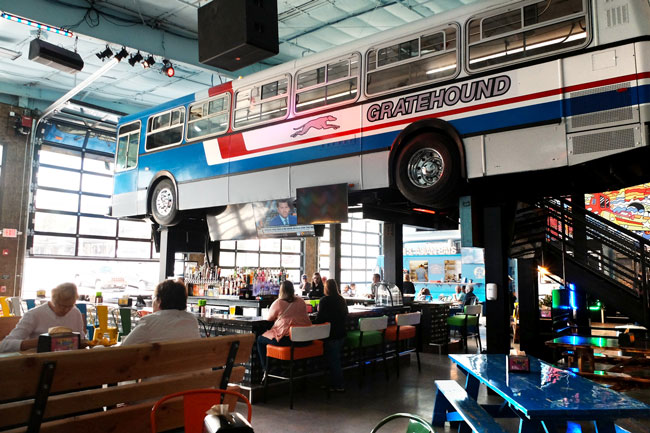In the U.S., coffee bars are a staple of the cultural landscape. Not only are these outlets a place for people to get their caffeine fix or purchase their signature beverage, but they also provide a gathering spot for friends to socialize, a place for remote workers to get out of the house and be productive, or a meeting spot for colleagues.
Because these operations must deliver high volume in a limited space, coffee bar designs hinge on efficient and intuitive layouts that maximize square footage. Just like a cocktail bar, efficiency depends on proper placement of beverage-making equipment and ancillary items necessary for orders. Minimizing staff steps and cross traffic behind the counter are the main goals in the design.
Not only are drink menus diverse, but there are also many types and sizes of coffee bars. These can range from a small cart or kiosk in a hotel to a counter at a university or a self- or full-serve retail operation.
No matter what the format, a successful coffee bar design depends on customers having a sense of the flow to be properly directed. It should be evident immediately upon entering the space where to queue up to order, pay, wait and pick up items. The barista should have full view of both the front door to greet customers and the back of house for seamless communication. Work triangles should be clear of obstacles and positioned for good flow with minimal staff crossovers and steps.
On The Menu
In terms of the menu, the coffee bar moniker has become a misnomer. This is because, in addition to the ubiquitous espresso, lattes, cold brew coffee and cappuccino, offerings include non-coffee drinks like traditional and specialty teas, refreshers, smoothies and energy drinks. This expands the equipment and supply requirements for both the front and back of house.
Smoothies and frappes (a cold, blended drink that can be made with coffee, tea, juice or hot chocolate, typically served in a tall glass with whipped cream and other toppings) are also prevalent in this segment. These offer a wide range of flavor options, giving operators an opportunity to expand signature beverages. Designating a specific area with refrigeration and blenders may be warranted, depending on the volume.
Coming on the heels of the energy drink market are caffeinated refresher drinks. These combine crushed fruit, juice, sweetener and green coffee extract to provide a pick-me-up java alternative. A food processor or blender can help expedite production of these increasingly popular beverages.
Japanese matcha beverages, produced from finely ground green tea leaves, have become more popular due to their reported health benefits. These include stabilizing blood sugar levels, reducing cortisol levels, and perhaps even increasing calmness due to L-theanine. This beverage does require a separate station or dedicated space if produced by the traditional method, which requires whisking and sifting.
Along with more diverse beverage offerings, many coffee bar menus now include dairy alternatives, including almond, oat and soy milk. These ingredients require refrigeration, which may be segregated from traditional dairy products.
Most coffee bars also offer a limited food and/or snack menu that varies depending on the operator. In these operations, the food, which may include pastries and other baked goods or limited grab-and-go meals such as sandwiches and salads, is secondary to beverages. For hot items, cooking equipment may include a microwave, speed oven or small conveyor oven, depending on the menu and volume.
Equipment Lineup
Even though there has been a huge movement in automating espresso making, beverage customization in most of these operations remains handcrafted. When purchasing equipment, operators should first determine if they will brew coffee more frequently in smaller batches or in a large batch and hold it; the latter option reduces the equipment’s operating hours.
Whether espresso is produced from a fully automated machine or a traditional unit, a coffee bar’s equipment lineup remains similar.
Espresso machines, tea brewers, hot water dispensers with adjustable temperatures and cold brew coffee dispensers are standard. Because the majority of drinks from coffee bars are now cold drinks, which are no longer seasonal only, consistency is key. There is a traditional method that is time consuming, where these beverages are slow brewed at room temperature for 12 to 24 hours, then slowly steeped to achieve a 4:1 concentrate. With new brewer technology, this process has been expedited and can produce one to two gallons of cold brew coffee in 30 to 60 minutes.
Space-saving equipment, such as undercounter refrigerators for storing milk and countertop speed ovens for heating premade sandwiches, make the most of smaller footprints. Drop-in wells, frost tops and other similar equipment at counter height enhance accessibility for milk, whipped cream and back stock.
Ice wells or undercounter ice machines are commonplace as is a wash station setup with brush jets that facilitate quick cleaning of accessories, such as milk steaming pots, mixer containers and pitchers. Support equipment typically includes blenders for mixed beverages, smoothies and frappes; a draft system for nitro brews; and knock boxes for dumping coffee grounds. Dump and hand sinks are also standard. Incorporating a scale by the grinders helps facilitate beverage consistency.
Operators can opt to keep condiments behind the counter for full service or in a self-serve station out front. For the latter, a trash receptacle should be close by as well as accessible refrigeration for milk, cream and other perishable ingredients.
Depending on the operation’s volume and square footage, coffee bars may benefit from having duplicate equipment by drive-thru windows, like brewers and espresso machines.
Operators looking to save labor and increase efficiency can opt for a self-serve coffee bar. The success of these stations has to do with the location and adjacencies. With this format, beverages are often bundled with, or next to, the condiment area. Placement by order pickup areas, but out of the traffic pattern, is ideal. Offerings are typically limited to hot or iced brewed coffee and iced tea, so equipment requirements are simple. However, infrastructure needs, such as plumbing and electrical requirements, should be assessed. Also, beverage container types, whether disposable or not, will impact this station’s makeup.
Key Considerations
While coffee bar menus are dictated by the operation’s demographic, design is dependent on the offerings. For example, operations offering pour-over coffee programs require more space that should be dedicated to these beverages due to longer production times. Layout is also vital as production flow impacts efficiency and speed of service, the hallmarks of this segment.
If condiments are in the front of house, these should be located in a separate area to reduce bottlenecks at the counter. The same is true for accessories like napkins and stirrers as a clear path of travel needs to be maintained.
Water filtration systems should be tailored to the coffee bar. This is because water quality directly impacts not only beverage flavors but also the equipment’s service life. If mineral and lime buildup are an issue, the equipment’s service life will be substantially shortened. Acquiring the services of a water consultant who can test and manage water quality ensures that beverages and equipment won’t be compromised.
Along with equipment, operators should consider signage as this not only informs customers about menu items and specials but will also direct people where to go to keep lines moving smoothly.
With the advent and increase of online ordering and delivery, coffee bars now require a dedicated area for picking up digital.



